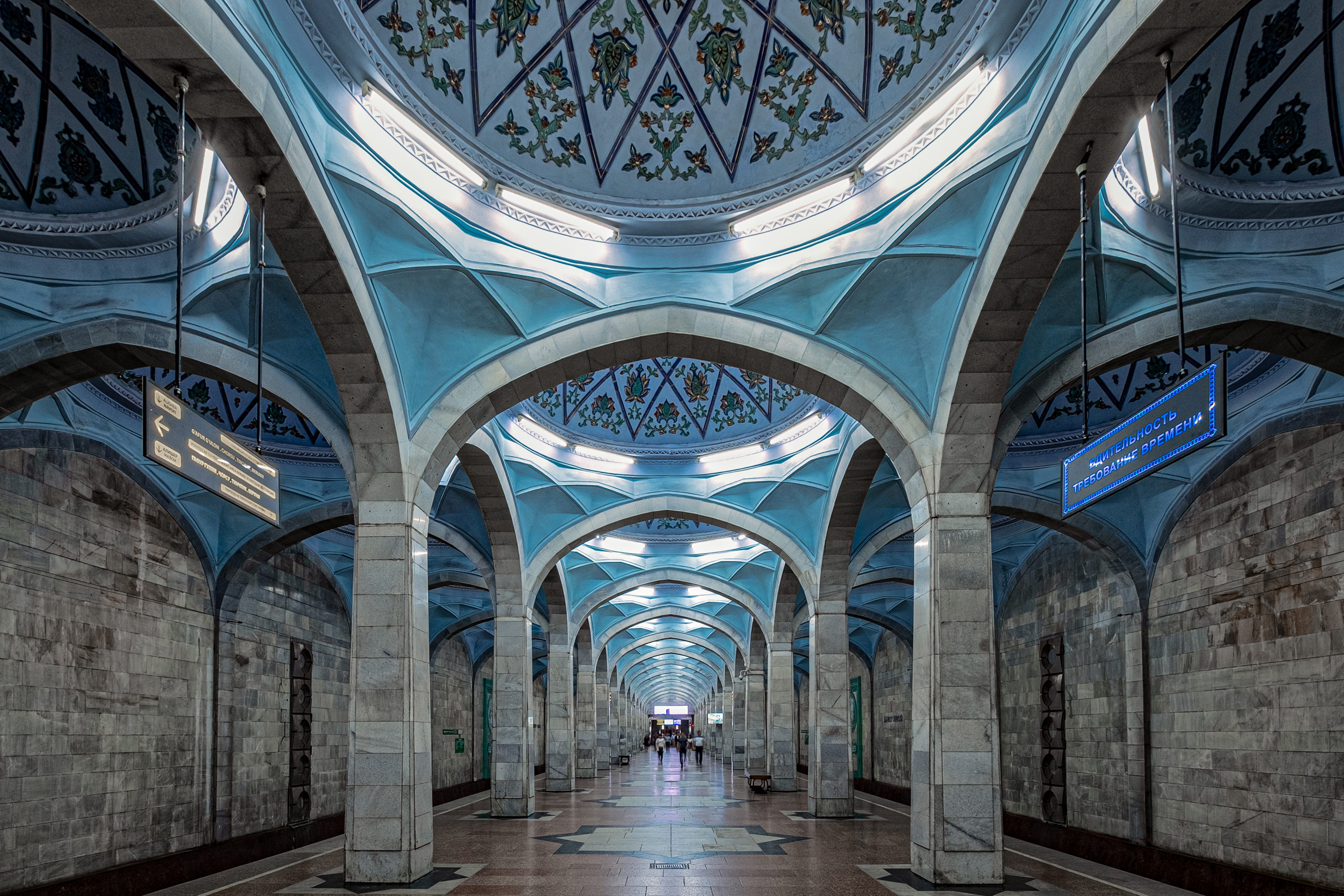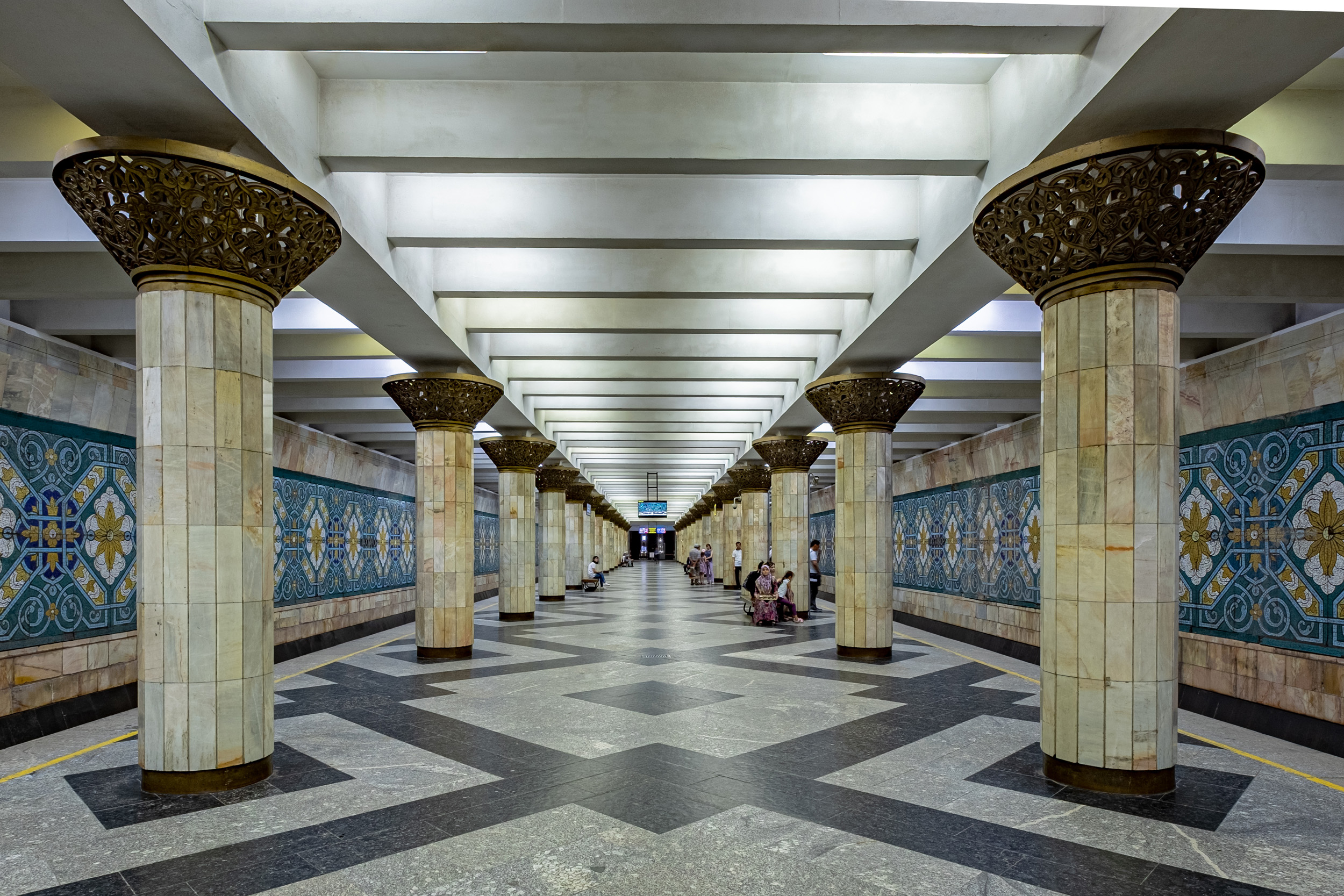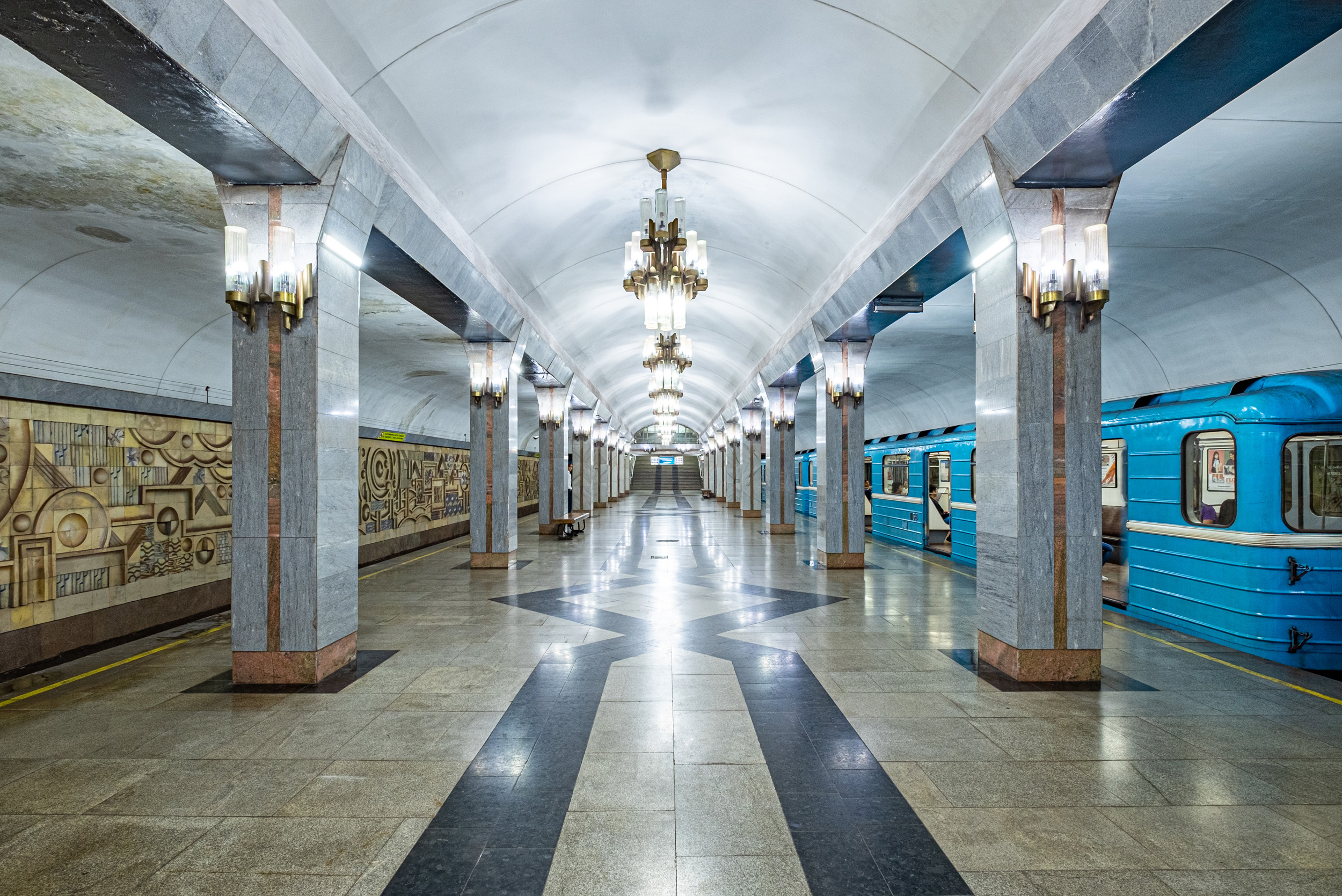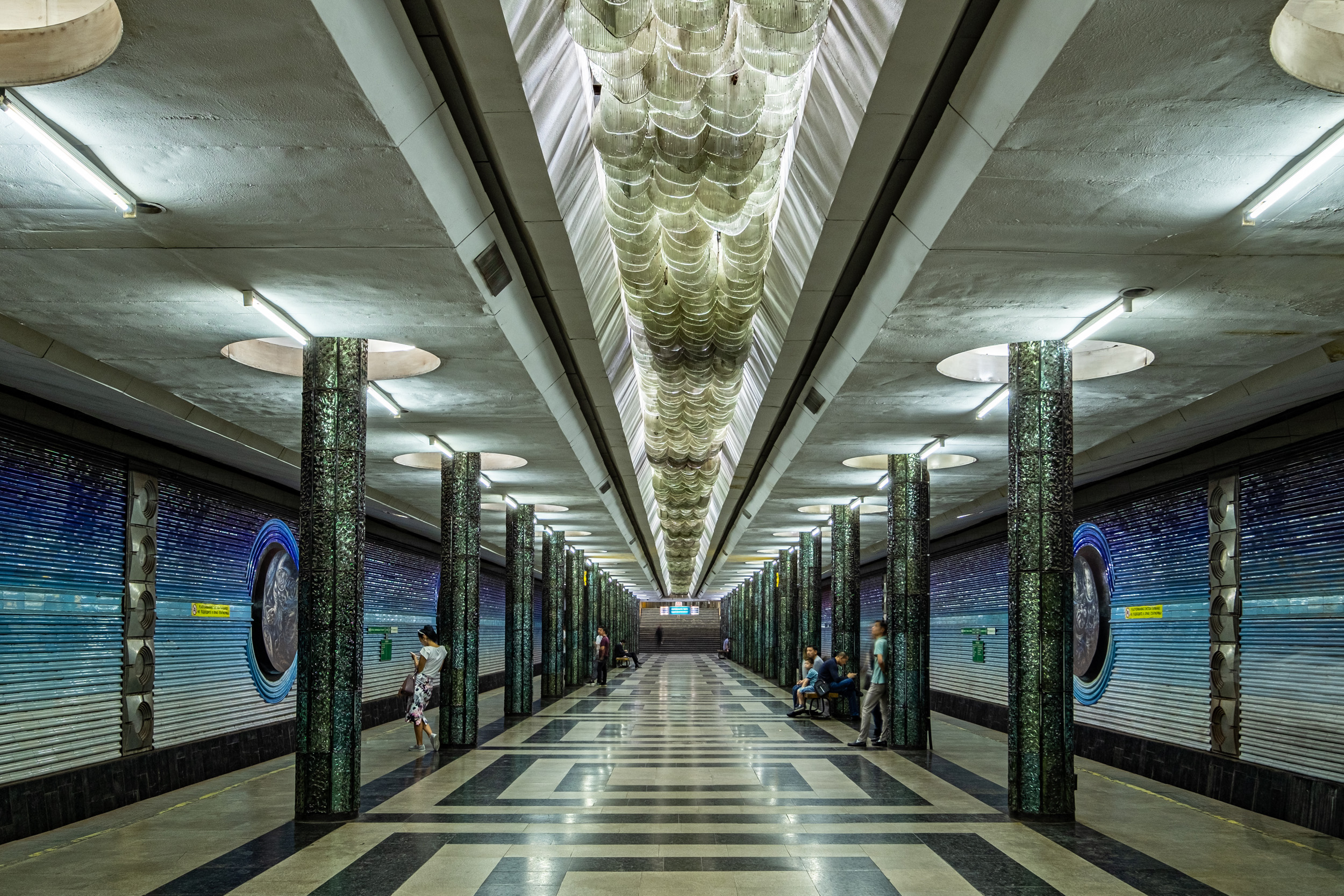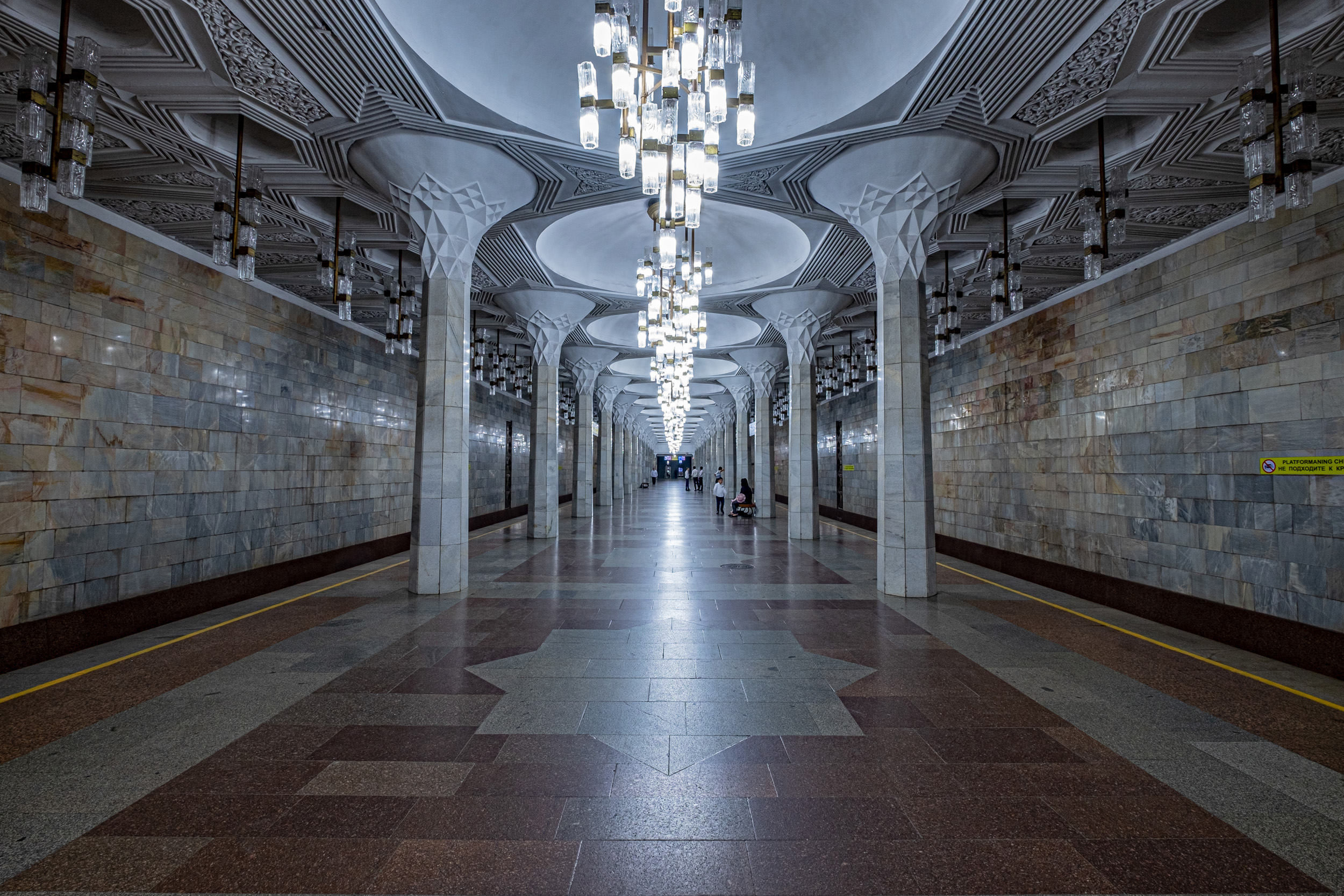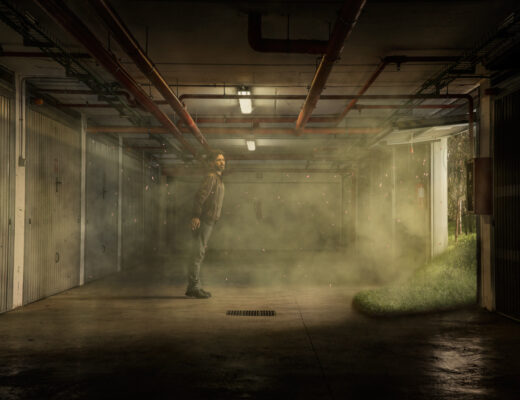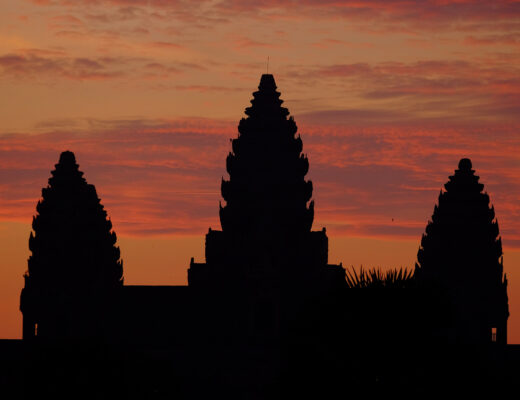Tashkent, the capital of Uzbekistan has more than 3.5 million inhabitants, making it the largest city in Central Asia. The city is also seen as the most cosmopolitan city in all of Central Asia. With extremely wide tree-lined avenues, countless fountains with many benches, parks and numerous modern restaurants, this surprisingly clean Tashkent is absolutely very different from the idea that you usually have of a Central Asian city.
All photographs accompanying this article were taken using the Fujifilm X-T1 and the XF10-24mm f/4 lens.
Tashkent is the modern capital of Uzbekistan, which unfortunately, unlike Samarkand, Khiva and Bukhara, was unable – due to an earthquake – to preserve many ancient monuments. But on the other hand it has its own sights. One is the Tashkent Metro, the first underground transportation system in Central Asia.
Tashkent metro stations are among the best-kept art secrets in the world. You will find a different artistic design and creative theme at almost every of the 29 stations. With a train ticket that costs 1400 Sum (about € 0.30) you can enjoy yourself for a day in the most beautiful art galleries you have ever seen.
The oldest Metro in Central Asia is a masterpiece with decorated platforms, glazed pillars and glittering tunnels. Soviet elements mixed with Islamic geometric shapes, angular shapes and sharp corners, which underline the grandeur and power of the once so powerful Russian empire, but at the same time seem to clash with the graceful lines and seductive cobalt and emerald hues of the Arab world.
Photography
From the construction, which began in 1977, the three metro lines were also intended to serve as a military site. That is why strict safety measures were taken from the outset and taking photographs of metro stations, bridges, railways and army bases was strictly prohibited. This ban on photography was lifted in July 2018 after the Tashkent metro lost its classification as a military installation. From that moment on, breathtakingly beautiful photos of these metro stations appear. By the way, taking a photo on a tripod still requires a permit.
The earthquake of April 26, 1966
The metro network was built as part of a reconstruction plan for Tashkent after the earthquake that struck the city on April 26, 1966. The earthquake with a magnitude of 7.5 on the Richter scale destroyed 80% of the buildings and left 300,000 people homeless.
Workers and craftsmen, architects and artists from all over the Soviet Union helped create a new city. Tens of thousands of new houses and buildings were built within a few years. An important part of this transformation was the Metro, the jewel in the crown of the new Tashkent.
Art as a starting point
Of all the projects, the metro was perhaps one of the most ambitious, because after the previously built subways of Moscow and St. Petersburg, the Soviet leaders wanted the Tashkent metro to also become an artistic highlight, a means to introduce art and culture in the daily lives of citizens.
The design
The Soviet planning agency Metrogiprotrans and its local Tashkent Metroprojekt department designed a metro network with the structure of three lines that are widely used in the Soviet Union that intersect in the center in the form of a triangle.
Despite modest concrete entrances and simple handrails, the view inside is enchanting. The interiors consist of sturdy and stable materials: metal (in the form of engravings), glass, plastic, granite, marble, ceramics and alabaster. The stations were decorated with pink and light gray marble from Gazghan and Nurata, and granite from the Kuramin and Chatkal mountains. The lighting is also interesting; in some stations it creates the atmosphere of the banquet hall, in others that of mysterious catacombs.
Practical
The Tashkent metro (Uzbek: Toshkent Metropoliteni) currently has three lines with a total length of 36 kilometers: Chilanzar (1977), Uzbekistan (1984) and Yunus-Abad (2001).
The underground network, stations and train sets of the Tashkent Metro are impeccably clean, safe and the whole thing runs like clockwork. Since 1977, around 180,000 to 200,000 travelers have been using the metro network on a daily basis from 5 a.m. to midnight.
To take a ride in Metro, you must buy a blue coin at the start of the station, at a counter marked with the word ‘KASSA’ (costs 1200 Sum, less than 30 cents).
After you have gone through the glass doors, just before the old Soviet tourniquets, there is a police checkpoint where security guards make a thorough search with the metal detector in the bags travelers brought.
The Tashkent Metro has the range and accessibility of the London metro, the efficiency of the Rotterdam Subway, the simplicity of the Rome Metropolitana and the space of the trainsets of the Paris metro. But in the field of art, the Tashkent Metro has no equal.


